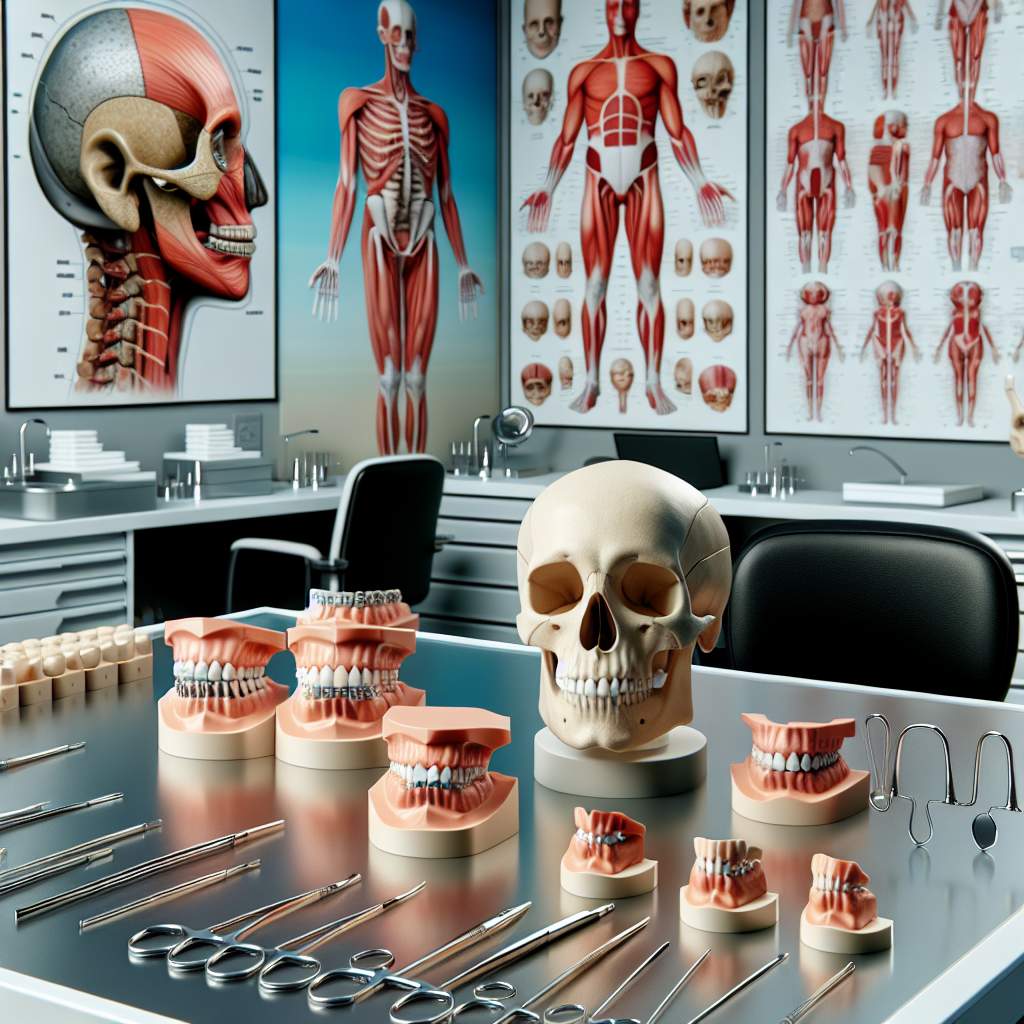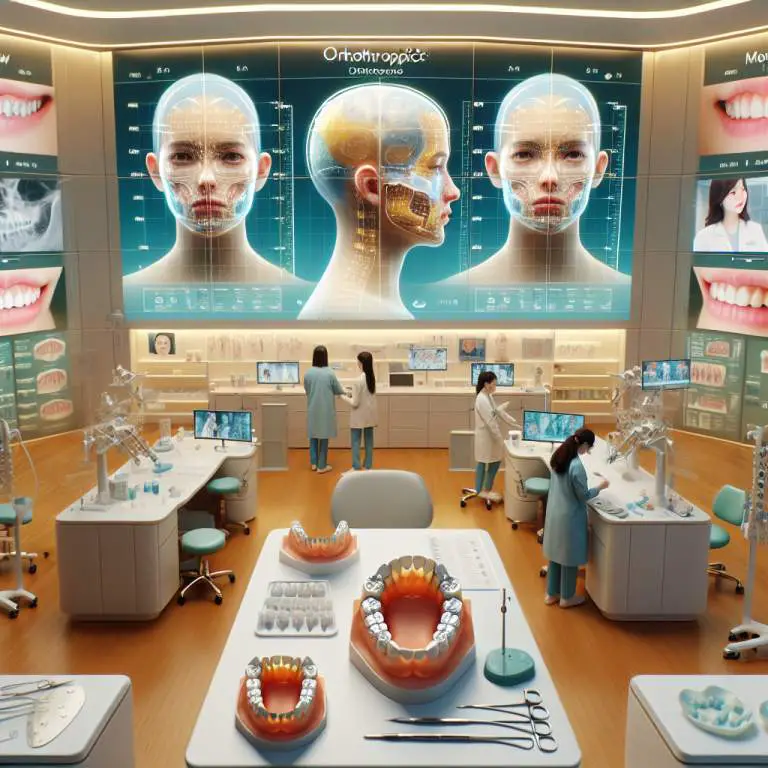How do individual anatomy variations affect mewing results?
Individual anatomy variations can greatly affect mewing results because everyone’s bone structure and muscle strength are unique. For example, a person with a naturally wider jaw may see different changes compared to someone with a narrower jaw when practicing mewing. Additionally, the starting position of the tongue and its ability to adapt can influence how effective mewing is for reshaping the facial structure. Therefore, outcomes can vary widely among individuals due to these anatomical differences.

How do individual anatomy variations affect mewing results?
When people try mewing, which is a technique where you press your tongue against the roof of your mouth to improve your jawline, they notice different results. This happens because everyone’s body is unique. Just like how some people are taller and others have curly hair, our bones in our faces are not all the same. These differences can change how well mewing works for someone.
For example, if someone has a jaw that’s naturally set back a bit more than usual, they might see big changes when they start mewing. On the other hand, if another person’s jaw is already in a good position but they want to make small improvements, their results might not be as noticeable. It’s all about how your body is made and what you’re starting with.
What are the key anatomical features that influence mewing effectiveness?
The main parts of your face that play a big role in how effective mewing can be include the shape of your jaw, the position of your teeth, and even how tall or short the roof of your mouth is. If someone has a wide jaw with lots of room for their tongue, they might find it easier to use proper mewing technique and see results faster.
On the flip side, if someone’s mouth is smaller or their teeth are really crowded, it could be harder for them to keep their tongue in the right spot. This doesn’t mean they won’t see any benefits from mewing; it just might take longer or require more effort to get there.
How does age impact the adaptability of facial structures to mewing?
Age plays a big part in how our bodies respond to anything new we try, including mewing. Younger people have bones that are still growing and changing, which means they can sometimes see changes from mewing more quickly than older individuals. Their bodies are like soft clay that’s easier to shape.
As we get older, our bones become harder and less flexible. This doesn’t mean adults can’t see any benefits from mewing; it just means that changes might happen slower compared to kids or teenagers. Everyone’s face can adapt over time with consistent effort; it just takes patience.
Can mewing correct jaw misalignments or is surgery required for certain conditions?
Mewing has been talked about as a way to help with minor jaw misalignments by encouraging better posture and stronger muscles around the mouth and neck. For some people who have slight issues with how their jaws line up, practicing good mewing techniques regularly might help improve their situation without needing surgery.
However, there are certain conditions where the misalignment is too severe for exercises like mewing to fix on their own. In these cases, doctors often recommend surgery to correct the problem properly. It’s important for anyone thinking about trying mewing for medical reasons to talk with a healthcare professional first to understand what’s best for their specific situation.
| Anatomical Feature | Impact on Mewing Outcome | Potential Challenges |
|---|---|---|
| Jaw Structure | Stronger, more defined jawlines may see quicker results. | Individuals with less pronounced jaws might need longer to see noticeable changes. |
| Tongue Size and Strength | A stronger, larger tongue can apply more effective pressure on the palate. | A smaller or weaker tongue may struggle to maintain correct posture, slowing progress. |
| Palate Shape and Size | A wider palate can accommodate proper tongue posture more easily. | Narrow palates might require more time for expansion to accommodate ideal tongue posture. |
| Nasal Passageways | Clear, unobstructed nasal passageways support better breathing techniques associated with mewing. | Obstructions or deviations (e.g., deviated septum) can make nasal breathing difficult, impacting mewing effectiveness. |
| Dental Alignment | Better alignment may facilitate easier adoption of correct tongue posture. | Misalignments or orthodontic devices (braces, retainers) could pose initial discomfort or adjustment periods. |
| Age | Younger individuals may experience more malleable facial structures and potentially faster results. | Older individuals might find changes occur more slowly due to less pliable bone structure. |
What scientific evidence supports the benefits of mewing on facial structure?
Research into mewing and its effects on facial structure is still in early stages. However, some studies suggest that proper tongue posture can influence jawline definition and overall facial aesthetics. This is because maintaining the correct position of the tongue against the roof of the mouth may help in aligning the teeth and jaws over time.
Experts in orthodontics have observed changes in facial structure among individuals who practice mewing consistently. These changes include a more defined jawline and improved alignment of teeth. Although these findings are promising, more comprehensive research is needed to fully understand the impact of mewing on facial structure.
Are there any risks associated with incorrect mewing techniques?
Incorrect mewing techniques can lead to several problems. If not done properly, it might cause discomfort or pain in the jaw, neck, or even lead to temporomandibular joint disorder (TMJD). It’s crucial for individuals to learn the correct technique before attempting mewing exercises.
Besides physical risks, incorrect mewing could potentially worsen any pre-existing misalignments or dental issues. Therefore, consulting with a dental professional or an orthodontist before starting any new oral posture practices is highly recommended to avoid any adverse effects.
How long does it typically take to see results from mewing, considering different anatomical starting points?
The time it takes to see results from mewing varies widely among individuals. Factors such as age, consistency in practice, and individual anatomy play significant roles. Younger individuals may notice changes quicker due to their more pliable bone structures.
In general, noticeable improvements might take several months to years of consistent practice. Some people report seeing initial changes within a few months, while others may not observe noticeable differences for a year or more. Patience and persistence are key when practicing mewing for structural changes.
Final Thoughts
Mewing has gained attention as a non-invasive method to potentially enhance facial aesthetics and improve oral posture. While anecdotal evidence suggests benefits, scientific research is still catching up to provide solid backing for these claims.
As with any self-improvement technique, it’s important to approach mewing with caution and seek professional advice if unsure about techniques or potential risks. Remembering that individual results will vary greatly helps set realistic expectations for those interested in exploring what mewing has to offer for facial structure enhancement.







